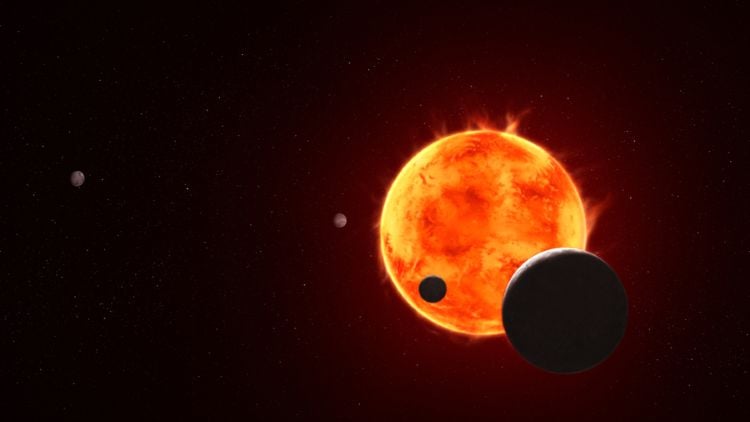Can water-rich exoplanets survive orbiting white dwarf stars, the latter of which are remnants of Sun-like stars? This is what a recent study accepted to The Astrophysical Journal hopes to
Astronomers from the International Centre of Radio Astronomy Research (ICRAR) have created the largest low-frequency radio color image of the Milky Way ever assembled. This spectacular new image captures the
A team of scientists has released a new survey mapping massive galaxy clusters, some of the largest structures in the universe, to test whether our fundamental understanding of the laws
Astronomers have created the first large scale map of dark molecular gas in the Milky Way, revealing vast networks of invisible star forming material that have so far have remained
This new NASA/ESA/CSA James Webb Space Telescope Picture of the Month features a cosmic creepy-crawly called NGC 6537—the Red Spider Nebula. Using its Near-InfraRed Camera (NIRCam), Webb has revealed never-before-seen
In May 2024, part of the sun exploded.
Could scientists find life in the clouds of exoplanet atmospheres? This is what a recently submitted manuscript hopes to address as a team of researchers investigated how the biosignatures of
The universe is a strange place. The X-ray Imaging and Spectroscopy Mission (XRISM) orbiting observatory recently highlighted this fact, when it was turned on a pulsar to document its powerful
A team led by a University of Maryland astronomer detected large complex organic molecules in ices outside of the Milky Way for the first time, offering a glimpse into the
A new study analyzing historical photographs taken by the Palomar Observatory between 1949 and 1957 has detected several mysterious bright spots in the sky. These transient objects, captured on film
-
 012024 in Review: Highlights from NASA in Silicon Valley
012024 in Review: Highlights from NASA in Silicon Valley -
 02Panasonic Leica Summilux DG 15mm f/1.7 ASPH review
02Panasonic Leica Summilux DG 15mm f/1.7 ASPH review -
 03How New NASA, India Earth Satellite NISAR Will See Earth
03How New NASA, India Earth Satellite NISAR Will See Earth -
 04And Thus Begins A New Year For Life On Earth
04And Thus Begins A New Year For Life On Earth -
 05Astronomy Activation Ambassadors: A New Era
05Astronomy Activation Ambassadors: A New Era -
06SpaceX launch surge helps set new global launch record in 2024
-
 07Space Force plans new ‘Futures Command’ amid pressure to speed up modernization
07Space Force plans new ‘Futures Command’ amid pressure to speed up modernization










